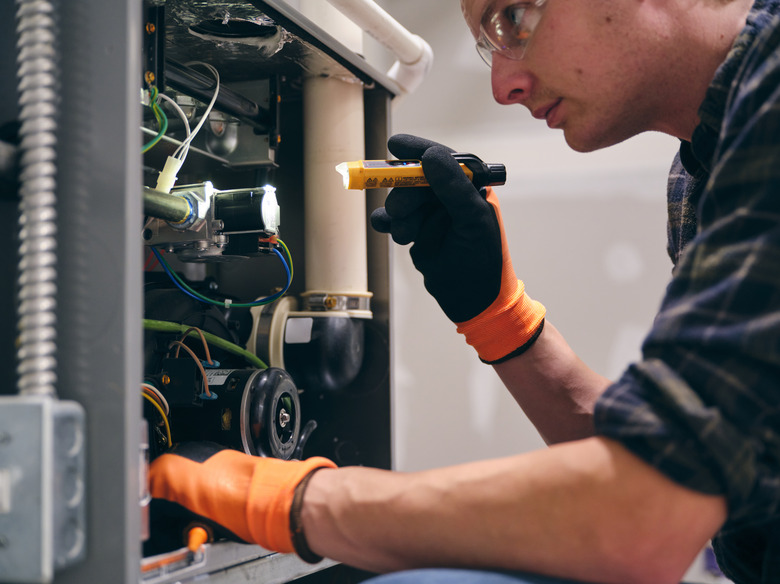How To Troubleshoot A Payne Furnace's Blinking Lights
We may receive a commission on purchases made from links.
Like many new, high-efficiency furnaces, Payne furnaces come equipped with an internal diagnostic system that lets you know if the system is not running properly. When the diagnostic system of your Payne furnace encounters a problem, it will alert you by flashing a code through the use of the light-emitting diode, or LED, lights located on the furnace. By paying close attention to the LED display on your Payne furnace, you can be quickly notified of issues and can easily troubleshoot any potential problems as they arise. The LED lights are typically located on the front toward the bottom of the furnace where the controls are located.
If your high-efficiency furnace diagnostic system has encountered more than one potential problem, it will indicate this by displaying the first code and then pausing briefly before beginning the second code. It will then pause again and return to displaying the first code if there are no additional problems requiring more codes to be displayed.
How to Troubleshoot a Payne Furnace's Blinking Lights
1. Count the Blinks
Watch the LED display and count the number of times the light blinks. Payne diagnostic codes are two-number codes. The first number is indicated by fast blinks and the second number by slower blinks. Write down the code after counting out the blinks for both the first and second number.
2. Identify the Codes
Refer to your high-efficiency furnace owner's manual for the corresponding meaning of the codes. Some of the most common codes include a 13 or 33 which indicate a limit switch lockout, a 14 or 34 indicating an ignition lockout, a 24 for an open fuse and a 31 code pointing to an open pressure switch. Any of the other fault codes usually indicate the need to be in touch with a service repair person.
3. Check for Blockage
Check to see whether your air filter is dirty, whether a return air vent is blocked or whether an air-supply vent is blocked if you have a code 13 or 33.
4. Check the Gas Supply
Check that the manual shut-off valve located on the gas supply pipe is in the open position for a code 14 or 34. Turn off the electrical supply and remove the access doors if that winds up not being the problem. Locate the control switch or knob on the gas valve inside the furnace and ensure that it is in the "on" position. If either of these are not on or open, you will need to follow your furnace's startup procedures after opening or turning them on.
5. Look at Your Fuses
Take a look at the fuses and the 24-volt wiring for a blown fuse or faulty wiring if your Payne furnace gives you a code 24.
6. Rule Out Compromised PVC Pipes
Look for cracks or damage to any of the PVC pipes leading to the combustion-air intake and the vent or exhaust on your Payne furnace if the system gives you a code 31. Also look for blockages in the combustion-air intake both on the side of the furnace and outside the home. Examine the vent or exhaust on the outside of the home for the presence of obstructions.
